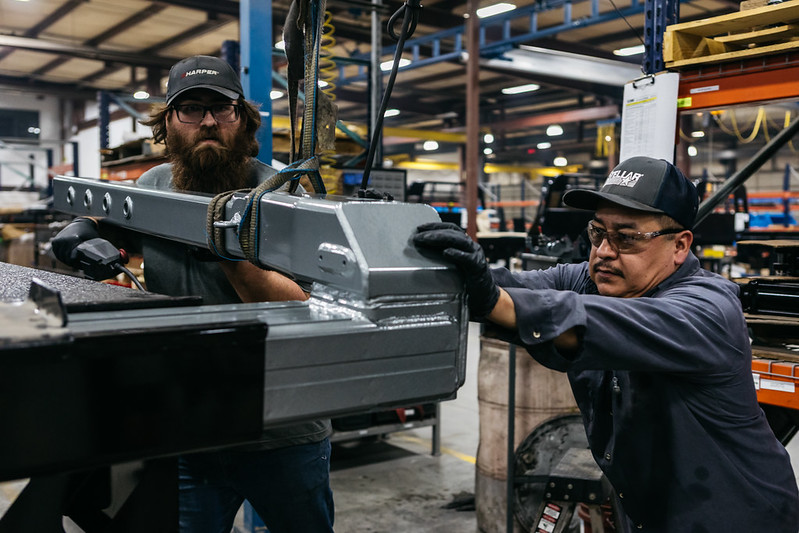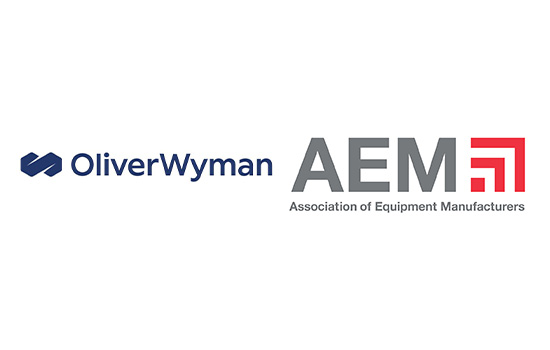As regulatory activity continues to increase over time, equipment manufacturers are required to do more and more to remain compliant and ensure market access is maintained. And, as environmental, social and governance become more prevalent, OEMs of all types and sizes must prepare themselves accordingly in order to be successful in an ever-evolving and more sustainable world. With that fact in mind, AEM recently sat down with Neil D’Souza, CEO at AEM service member company Makersite, to discuss what equipment manufacturers need to be thinking about – and, more importantly, doing – in response to regulatory activity and compliance demands.
AEM: There is no shortage of consideration equipment manufacturers need to keep top-of-mind related to increased regulatory activity and ensuring compliance over the long term. Can you outline some of these considerations and explain why they are so important?
D’Souza: The world is retooling. It’s retooling for the decarbonized world, but it’s not just carbon. It’s also the regulations being put in place around waste, fuel being utilized, efficiency and the types of material you can use. These are all advancing and coming into focus, and there are downstream regulations that affect what companies can do, as well as determines what products and equipment they can buy.
One major reason AEM members should be aware of this is there are regulations for the ag and construction customers they serve that are forcing them to consider what they’re buying. I believe in the next 30 years all the equipment we see in the world will have to be replaced in some shape or form. Ultimately, the time to start addressing this is now. Because, if companies want to do something, there’s not a lot of time for them to develop a new solution.
It's also so important for organizations to know what the requirements are to help position themselves to win customers. Financing for retooling will come from green funds, or green earmarked funds. These have certain consequences in terms of what types of equipment can be bought and what types of information need to be disclosed about equipment when they’re selling it. And, considering the Inflation Reduction Act of 2022, how much of a product is manufactured in that country plays a crucial role in what kind of rebate is secured.
Also, there are regulations that directly imply greater costs. So, knowledge of what implication is on supply chains, which ones can be used to construct a product so it can be sold in certain markets, which don’t levy such extra costs – these are all key considerations many OEMs are – and should be – thinking about right now.
AEM: How can something like environmental, social and governance (ESG) monitoring play a role in addressing these considerations?
D’Souza: It comes down to focusing on the product and being knowledgeable about it. Unfortunately, many equipment manufacturers today are becoming assemblers. So, that means having less and less information about their products.
Something to keep in mind is when looking at a regulation, whether it’s reporting-based, access-based or compliance-based, there are different types. One is, “You need to tell me what’s in your product.” Another is, “You are not allowed to have these materials in your product.” A third is, “You need to manufacture this product in this particular location.” Whatever it is, the key to answering these questions is knowledge about a product. So, the first thing OEMs need to do is address their data to make sure they develop an understanding of what’s happening in their supply chain. What is the product, really? And how does it connect to the upstream supply chain?
When it comes to in-house expertise, there are two components. The first is awareness around what’s happening. Or, more specifically, it’s general awareness of how regulations affect how a business functions today. And when it comes to sales, procurement and transparency about products, developing in-house expertise is going to become more and more important over time. And while things may not be ESG-driven yet, they are definitely ESG-aware already. So, creating this greater sense of awareness will help organizations avoid making major mistakes.
Developing specific expertise in companies is something many major OEMs are doing today. Across the board, organizations are trying to develop some muscle to leverage what’s happening in the world. This wouldn’t be happening if so many regulations weren’t coming into focus. And the major problem is no one knows the full scope of outcomes of all these regulations, because so many are still in development.
Ultimately, organizations need someone to keep an eye out on what’s happening. Ideally, there needs to be an ability to influence, but more importantly, help prepare for an outcome. Because the question is not if there will be a regulation, it’s a matter of how strict it will be in the end.
"The world is retooling. It’s retooling for the decarbonized world, but it’s not just carbon. It’s also the regulations being put in place around waste, fuel being utilized, efficiency and the types of material you can use. These are all advancing and coming into focus, and there are downstream regulations that affect what companies can do, as well as determines what products and equipment they can buy." -- Makersite's Neil D’Souza
AEM: How can organizations avoid challenges, pitfalls and mistakes associated with regulatory compliance?
D’Souza: According to engine maker Cummins, by 2026, there will be 27 different regulations that span different kinds of reporting requirements. The count is currently at seven, so consider about four times that over the course of the next three years.
Also, we’re now experiencing a general trend in every jurisdiction to bring sustainability into the realm of compliance. Just like what happened with product safety 40 years ago, we’re seeing this with compliance. And just like we were having growing pains back then, we’re having growing pains now.
The key consideration to keep top of mind is to not be distracted by ongoing uncertainty. It’s always about understanding -- and being transparent about -- products. Ultimately, that gives organizations the biggest bang for their buck. Also, there are no shortcuts. That cannot be emphasized enough. OEMs cannot cut corners when developing and launching new products.
AEM: Are equipment manufacturers coming around and beginning to themselves the tough questions and right questions about regulatory compliance?
D’Souza: It’s a maturity curve. I would say, when it comes to equipment manufacturers, they are still in the early adopter phase. There are very few that have matured beyond that at this point. But it’s moving in the right direction because there are downstream industries more exposed and, therefore, are further along that maturity curve. And they are driving these kinds of purchases now.
The thing that’s unique about the equipment manufacturing industry is the biggest impact these regulations have is actually downstream, in terms of having the potential to influence better outcomes. Equipment manufacturers are making machines that run other industries. And I think the ability to navigate these things will determine which OEMs– and their products – will win in the end.
Subscribe to the AEM Industry Advisor for more AEM member perspectives.





